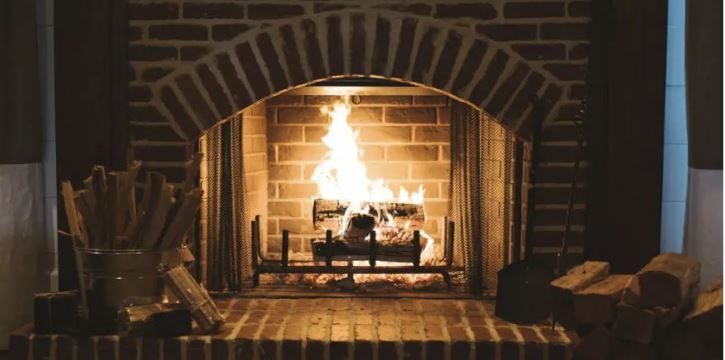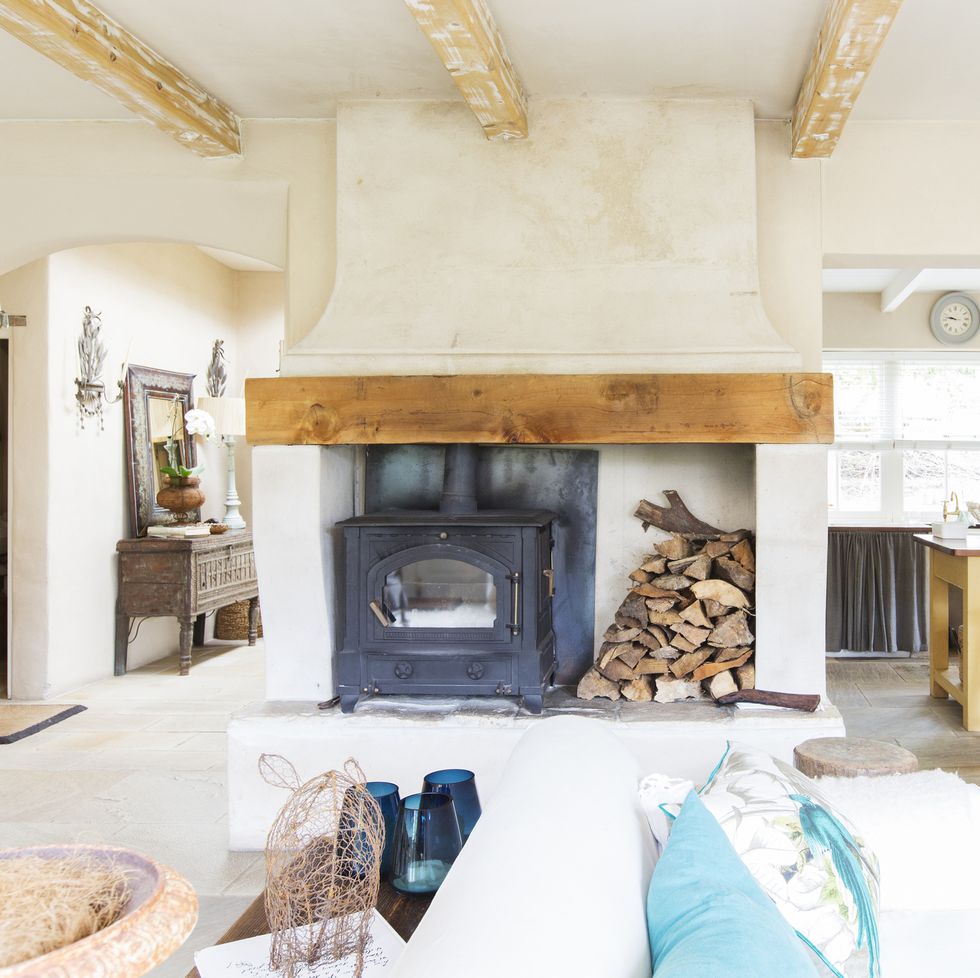Wood Burning Fireplaces, Luxurious and Inefficient
Image: Cutting Edge firewood
Wood burning Fireplaces, Luxurious and Inefficient.
Beautiful, elegant, and one of the most popular add ons to custom homes (77% of Americans want a wood burning fireplace in their homes). They also happen to be a massive energy sink and greatly impact your health. So how efficient are wood burning fireplaces and are they the correct choice for your home?
Before electricity, fireplaces and woodburning stoves were the only way to heat a home. Designs have improved to make them more efficient and safer, but the concept of a fireplace (being a hole in the wall and a hole in the roof connected by a narrow chimney) hasn’t changed in 700 years. The main issue with fireplaces, is that they can make your home colder, especially if you don’t have an extremely well insulated home. Another main issue with them is their effects on your respiratory system. Respiratory issues can be brought on and exacerbated by fireplaces and woodburning stoves. No matter how well designed a fireplace is, and how well ventilated the space is, some amount of smoke and particulates will always get into the room.
To keep a fire going, you need constant air access and flow in the room. Most of the heat from the fire ends up being funneled up the chimney and out of the home. It doesn’t radiate and penetrate the room efficiently. Wood burning fireplaces create negative pressurization (cold air is being drawn in from the windows and pushing the warm air up through the chimney). A traditional wood burning fireplace can draw 4-10 times as much air from the room that it needs to actually burn the fire. They are at most 10% efficient at heating the space, but because construction for a proper wood burning fireplace is a difficult and dying craft, they tend to have a negative effect on heating the home. If the fireplace is not installed correctly, or if there are damages to the structure of the fireplace, there’s a high chance of improper air circulation and dangerous increases in carbon monoxide and small particles being expelled inside your home. So what are the alternatives?
The most popular alternative to wood burning fireplaces are gas fireplaces with faux wood. They give off radiant heat. They do not require air to be drawn in from the room, and use a minimal amount of air from the outside. The gas burns without particulates that are created by the wood, but there will be an increase in carbon dioxide in the room. Gas fireplaces are the second most efficient alternative to a wood burning fireplace. They are up to 60-90% efficient.
There are also electric fireplaces– which is just a simulation of a fire that emits heat, the most efficient option as it does not require the extensive cycling of air that gas or wood fireplaces do.
If you’re set on using natural kindling, wood burning stoves are going to be the most efficient option. Wood burning stoves require a fraction of the air and because they are contained are able to radiate heat. According to the EPA, wood burning stoves are 70% efficient at converting the air to usable heat. Because of the design of wood burning stoves, they come with a high potential for burn by accidentally touching the metal encasing the fire.
Getty Images
When having the desire to have as little impact on the planet as possible, overall a fireplace or wood burning stove is not the answer- even though it may seem that your home would no longer be burning fossil fuels in order to heat it. The particulates that are released into the air are classified as some of the most dangerous and toxic in terms of air pollution. The EPA has a list compiled of wood burning appliances that follow the 2015 air emission rules. These are held to higher standards of efficiency and particle emission in order to protect your health and to help reduce your carbon footprint. The overall heat output, efficiency, carbon monoxide levels, certified fuel type and emission rate are all tested in order to give it an EPA certification rating.
Nowadays wood burning fireplaces are an aesthetic choice rather than a survival one. Despite its inefficiency, making an aesthetic choice is still a valid reason to want and have one in your home. However, if it’s being used to heat your home perhaps another choice of heating will serve you better.
By, Kay Kriegel intern extraordinaire @ Assembly.




